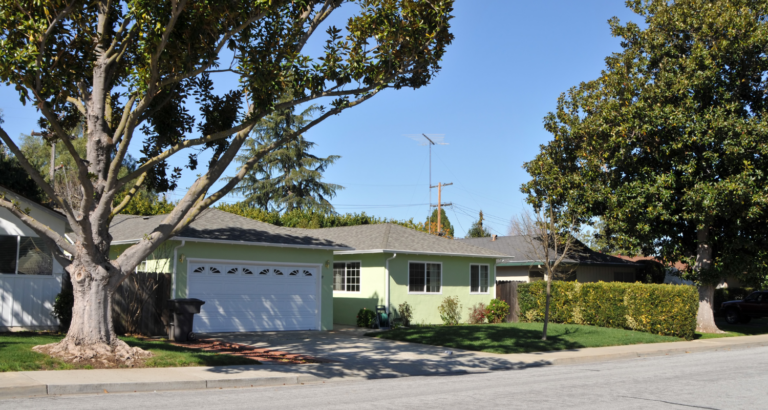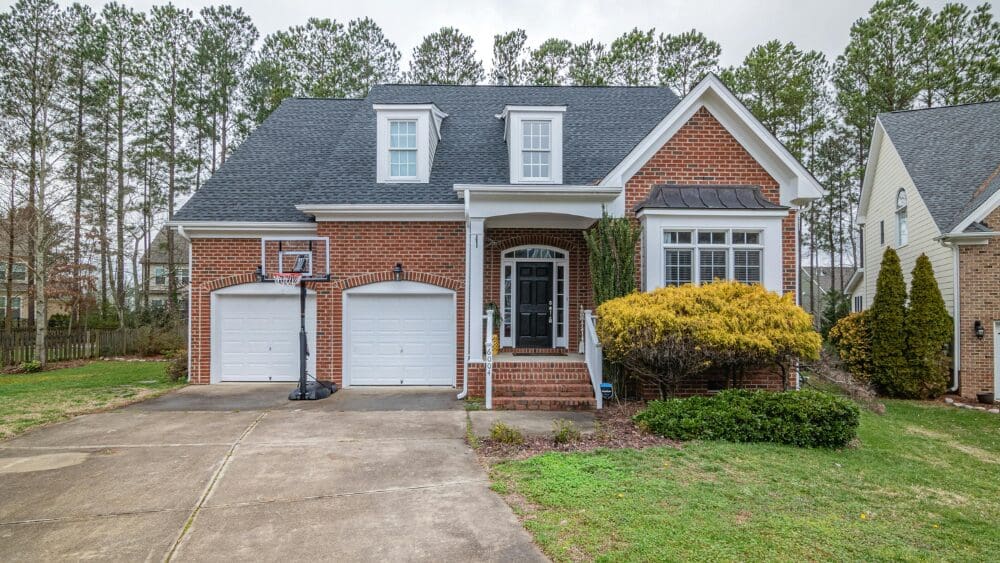
DISCLAIMER: As a friendly reminder, this post is meant to answer questions about bridge loans in California and is intended for educational purposes, not financial advice. If you need assistance navigating the use of a bridge loan in California, HomeLight always encourages you to reach out to your own advisor. With low inventory and notoriously high home prices, California homeowners are looking for creative financing solutions to fund their dream home purchases. One of these solutions comes in the form of a bridge loan — this kind of loan allows homeowners to purchase their next home before needing to sell their old one. If you need more time to prepare your old home to sell, or you’ve fallen in love with your dream home and need to act quickly, a bridge loan might be your solution to navigating the process of buying and selling. In this post, we’ll share expert insights on this unique financing solution and how you can put it to work for you. Let’s dive in. In real estate, a bridge loan is intended to be a convenient and fast way to buy your new home without waiting for your old home to sell. This short-term loan (also called a swing or bridging loan) helps homeowners during the transition between properties. A bridge loan is typically more expensive than a traditional mortgage. The bridge lender will lend the buyer the equity they have built in their existing house so they can move forward with the purchase of a new home. The most common scenario in real estate where a California buyer will need to apply for a bridge loan occurs when they need to purchase their new property before their old home has sold. In this case, they will use the equity from their previous home to cover the down payment and closing costs for their new purchase. Homeowners in California have seen record spikes in home equity over the last three years, with an average growth of $117,000 in the second quarter of 2022, which later decreased by $8,500 in the fourth quarter. According to Robert Lopez, a top real estate agent on Team Z, whose team sells homes 51% faster than average agents in San Diego, this growth in value greatly improves a homeowner’s chance of qualifying for a bridge loan using the equity that they have built on their previous homes. “Here in San Diego, our prices have increased over the past few years at a rate we’ve never seen before. So in the past few years, I think it’s pretty easy [for borrowers to qualify] because of the equity spike,” Lopez explains. In many cases, the lender providing your new mortgage will also handle your bridge loan. They typically require that your existing home be listed on the market, and will offer this bridge loan for a maximum of six months to one full year. Depending on your unique situation, the lender on the new home might need to calculate your debt-to-income ratio (DTI). The DTI equation would include the payments from your current mortgage on your old house, your new payment on the home you are purchasing, and the interest-only payment on the bridge loan (if applicable). However, your lender might be able to only include your new mortgage payment if your previous home is under contract and the new buyer has final loan approval for their purchase. Lenders do this to ensure that you will be able to make the payments on both properties in the event that your home does not sell immediately. For the savvy homeowner, bridge loans can be a great tool for closing the gap between buying a new home and selling your old one. Here are some of the benefits of this kind of financing: As mortgage rates slowly improve from their highs in 2021 and 2022, the demand for housing in California has seen some growth. This, unfortunately, means more competition among buyers for homes — especially as the pace of new listings on the market slowed significantly in late 2022. To compete in California’s tough market, coming in with a strong offer is as important as ever. “When you are making an offer that is contingent on the sale of your previous residence, which is the alternative to getting a bridge loan, you don’t have a lot of purchase price negotiation ability because you are asking the seller to wait until you sell your home,” explains Heidi Daunt, branch manager and owner of Treehouse Mortgage Group in Monterey, California, who has over 35 years of lending experience. “If you have an approved bridge loan, you can write a non-contingent offer, so it gives you better negotiating power on your new purchase.” One of the biggest stressors for homeowners who want to buy and sell at the same time is the timing. If you sell your home first, and can’t close on your new home in time, you risk having to find a temporary place to live. While this is not only inconvenient, it can be expensive. The cost to hire movers in California can range anywhere between $500 on the lower end and $4,000 or more depending on the size of the home and the distance of the move. Paying movers to move all of your belongings from your old home to your temporary one, then finally to your new purchase, could double that expense. The cost of renting your temporary home is also significant — in fact, California took the No. 3 spot amongst all states for the highest average rents in 2022. A bridge loan could be your solution to this problem. Getting a home listing ready can be a stressful and difficult process for home sellers, especially if they are still living in the house while trying to renovate or declutter for showings. Lopez recalls an experience when a bridge loan gave his clients more time to prepare their previous residence after they had moved out. Being in their new home sooner made it much easier to work with contractors to make renovations. “Being able to use those resources for a couple of weeks in order to best represent the property and stage it once they were out of there really increased our showing capacity,” he shares. Repayment options will vary depending on the lender, but many lenders will not require you to make a monthly payment on your bridge loan during the loan period. Some might require an interest-only monthly payment or a lump sum interest payment at the end of the term along with the loan balance. This can make a bridge loan a convenient option for buyers who are tight on cash before selling their previous home, allowing them to pay off their bridge loan using the proceeds from their sale. There are a number of factors to weigh before you commit to bridge loan financing. Always read the fine print and evaluate all costs and terms with a trusted loan advisor before making a decision. Here are some of the drawbacks of bridge loans: When adding up all of the expenses of buying and selling a home, the cost of a bridge loan, on top of everything else, can seem daunting. However, you are paying for the convenience and ease that a bridge loan provides — and it comes at a premium. Daunt shares that with the bridge loans she offers at Treehouse Mortgage Group, this fee comes out to 2% of the bridge loan amount. Other California lenders might charge more or less for this kind of loan, but 2% is typical. So, for a bridge loan of $200,000 to put toward your down payment on your new purchase, this would be a cost of $4,000. Interest rates for bridge loans are also typically higher than those for traditional mortgages, due to the short-term nature of these loans. Your lender will need to evaluate all of your monthly payments to determine if you can afford your mortgage payment for your new home purchase. And unfortunately, they might need to factor in your payment on your departing residence if it has yet to be sold or is not under contract to be sold. Unless you have sufficient monthly income to cover both mortgage payments according to your specific lender’s guidelines, you might not qualify for this kind of financing. However, these policies are in place to protect both the lender and you as the consumer to avoid getting stuck with two payments that you might not be able to afford. In addition to your monthly income, lenders will also review the amount of equity you have in your departing residence to determine how much you are qualified to borrow. If you owe more than 80% of your current home’s value, you might not qualify. With demand slowly increasing in California’s market as mortgage rates cool off, buyers can expect increased competition for homes, especially with California’s housing shortage limiting inventory. Bridge loans give homeowners more flexibility in their house-hunting endeavors because they allow them to make offers non-contingent on selling their previous home — this can be an asset in more competitive markets. Bridge loans are also more common in California than you might think. Lopez estimates that in the offers he has seen in San Diego in the last three years, 15% to 20% of those came from buyers taking advantage of bridge loans. Some examples of when a bridge loan might be a solution include: Because mortgages are regulated at both a federal level and a state level, there are protections in place to avoid discriminatory and predatory lending practices. That being said, the requirements to get a bridge loan in California are dependent on each borrower’s unique situation. Most California lenders will evaluate the value of your current home compared to your current mortgage payment, the value of the home you would like to purchase, your credit score, your income, your monthly debt payments, and your assets at a minimum. To qualify for a bridge loan in California, you typically need: Because bridge loans are considered “temporary,” they are typically exempt from some of the lending rules that govern loans in all states, including California. Most notably, certain Regulation Z rules that prohibit “balloon payments’” on high-cost mortgages and limit the total costs that a lender can charge in interest and fees. It is always best to do your research and consult with an expert advisor before considering this kind of financing. As noted above, bridge loans are not cheap. A 2% premium is common for this kind of financing, but it varies widely between lenders. If you are applying for a bridge loan with the same lender as with your new mortgage, you won’t likely need to pay for extra underwriting or other mortgage fees as your bridge loan and new mortgage will be underwritten and approved at the same time. Interest rates for bridge loans are typically higher than those for traditional mortgages, however. Your rate will likely depend on your creditworthiness and the type of lender, but as of early 2023, Daunt shared the current going rate at her company of 6.99% (with a traditional bank). North Coast Financial in Oceanside, California, however, estimates average rates of between 9% and 10% with a hard-money lender. Compared with the current average 30-year fixed mortgage rate (March 2023) of 6.6%, bridge loans can be significantly more expensive. Not all lenders are created equal — some institutions will be more focused on residential lending, while others will be a better choice for investors and businesses. Here are the most common sources for bridge loans: While a bridge loan might not work for every homeowner’s unique situation, there are alternatives to consider: In today’s market, there are companies like HomeLight that provide solutions for California homeowners stuck in the tricky situation of needing to buy a home before they sell their old one. These companies incorporate bridge loans to close the gap between your two homes to take the stress out of moving. HomeLight’s Buy Before You Sell program, available in California, does just that. This program allows you to purchase your new home and move in while getting assistance to sell your old home. Examples of other “buy before you sell” or home trade-in service companies include Knock Home Swap, Orchard, and Ribbon. As California homebuyers navigate a challenging market with low supply and high home prices, some are turning to bridge loans to simplify the process of buying a new home and selling their old one. Bridge loans let homeowners borrow against the equity they have built in their previous home to put toward their new purchase, giving them more time to sell and taking away much of the hassle of getting the timing just right. Consider HomeLight’s Buy Before You Sell program to take the uncertainty out of your next home purchase — and while you’re at it, HomeLight also offers other solutions for simplifying your real estate journey, such as Agent Match to find the top-performing real estate agents in your market (for free!), and Simple Sale, which can provide you with a no-obligation cash offer for your home and close in as little as 10 days. Header Image Source: (disorderly / Depositphotos)
What is a bridge loan, in simple words?
Here in San Diego, our prices have increased over the past few years at a rate we’ve never seen before. So in the past few years, I think it’s pretty easy [for borrowers to qualify] because of the equity spike.
How does a bridge loan work in California?
What are the benefits of a bridge loan in California?
You can make a non-contingent offer on your new home
You only have to move once
You can prepare your old home for sale after moving out
Some lenders don’t require payments during the loan period
What are the drawbacks of a bridge loan?
The cost
They can be difficult to qualify for
When might I need a bridge loan in California?
What’s required to get a bridge loan in California?
How much does a bridge loan cost in California?
Who provides bridge loans in California?
Are there alternatives to bridge loans in California?
Are there companies in California that can help me buy a house before I sell?
A creative financing solution for California homeowners



